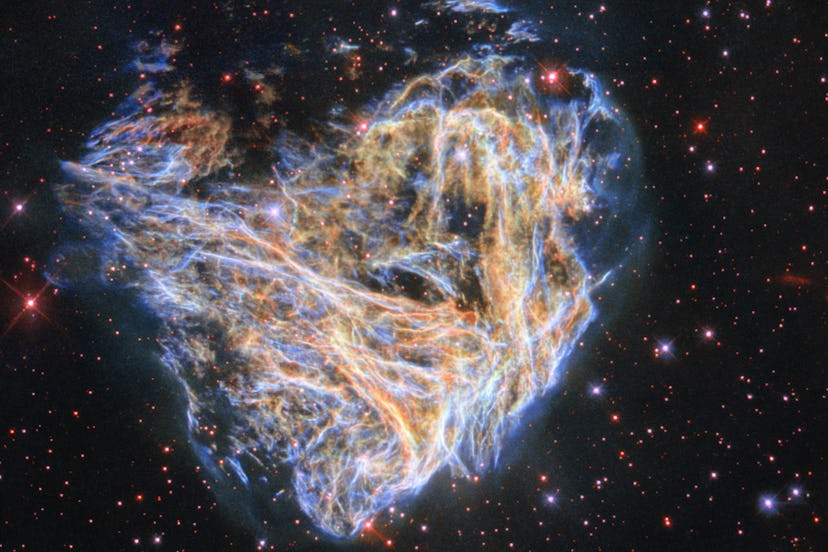This Hubble Telescope Photo Was Just Named The Most Popular Of 2022
On Dec. 31, NASA shared a photo highlighting a timely space object, given that it looks like fireworks, and shared that it was a favorite image of the year.

If we had to choose our favorite image from the Hubble Space Telescope or the James Webb Space Telescope in 2022, it would be a hard decision to make. There have been some absolutely incredible images from both telescopes. But according to NASA, there was one clear winner that was named the most popular Hubble Telescope photo of 2022, and it’s a beauty.
On Dec. 31, NASA shared a photo to Twitter highlighting a very timely space object, given it looks like fireworks, and shared that it was a favorite image of the year.
“DEM L 190 looks like #NewYearsEve fireworks!” the agency tweeted. “This supernova remnant was also voted our Twitter audience's favorite Hubble image from 2022. Good choice!”
Can you explain what we see in this photo like we’re 5 years old?
What you’re looking at is the debris of what used to be the massive star known as DEM L 190, also known as LMC N49. This sky object is 160,000 light-years from Earth, according to the European Space Agency (ESA). This supernova is considered the “brightest supernova remnant in the Large Magellanic Cloud,” a small Milky Way galaxy in the Dorado constellation.
To us, this colorful, bright thread bundle image could be a beautiful firework, but what you’re really looking at is a collection of gas and dust leftover from after the death of the supernova.
DEM L190 has been seen in images before, with the agency first publishing an image of this supernova remnant nearly 20 years ago.
“This new image incorporates additional data and improved image processing techniques, making this spectacular celestial firework display even more striking,” the ESA explains.
This article was originally published on